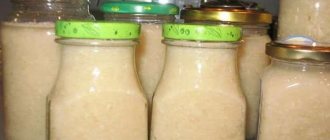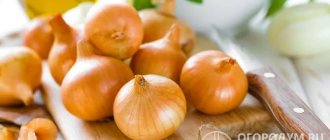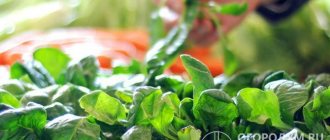Features of preparing green salad and watercress for the winter. Recipes and tips.
The busy season of homemade preparations is in full swing. Everything is ripening and ripening, just have time to collect, wash and put it in jars/freezer.
Much has been said about the benefits of lettuce, and its fresh taste delights every lover of natural food.
On the other hand, experienced housewives know about the “fastidious” nature of salad - how difficult it is to keep it fresh for a long time. However, through trial and error, they found their secrets and nuances in this matter.
Continuing the topic of homemade preparations for the winter, let's talk about proven methods for green salad and watercress.
Types of Leafy Vegetables You Can Freeze
Not all varieties of leaf lettuce can withstand the freezing process without visible loss due to their fragility. The most convenient for harvesting in this way are those that have many small leaves (cress, corn) and those that have denser foliage (mustard greens, arugula, spinach, chard). Endive salads (endive, escarole) tolerate freezing quite well, relatively preserving the structure and shape of the leaves.
Large-leaved, red-leaved and cabbage (iceberg, radicchio, etc.) species are frozen fresh much less often.
Asparagus salad (uysun) is still unfamiliar to Russian gardeners, but compared to the listed varieties, its stems and leaves retain their attractive appearance better than others when frozen.
Early ripening uysun (pictured) is valued for its juicy fleshy stems up to 80 cm high, 4 to 10 cm in diameter and long narrow leaves
It is clear that it will not be possible to decorate a serving dish with thawed leaves in order to effectively serve the treat to the table. But, for example, adherents of vegetarianism, proper nutrition, and a raw food diet use them for dishes in which the appearance and integrity of lettuce leaves is not important. These can be cocktails, soufflés, smoothies, cream soups, and dressings for warm salads prepared according to various recipes. According to reviews, people on a diet also like frozen salad products.
DIY dry seasoning for soup
Over the summer, as they ripen, they make an excellent dry seasoning for soups and side dishes for the winter from various garden spices. We start in the spring by harvesting green onions, dill, parsley, and herbs. Throughout the summer, dried bell peppers, hot peppers and all the greenflies from the garden, which the household loves, are added to it.
This seasoning is good because you include garden herbs and vegetables in it yourself, and you know for sure that it does not contain any harmful additives.
It is best to dry in special dryers. Quickly dried components of the dry mixture guarantee the preservation of all benefits, aroma and taste.
Therefore, it is best to mix all the ingredients at the very end of summer, or even in the fall. You can make different compositions, focusing only on the taste preferences of your family. Perhaps some people don’t like basil, while others can’t stand green onions in soup.
The smaller the particles of homemade seasoning, the more convenient it is to use. For example, add it directly to a bowl of hot soup. There is enough time for it to steam in a hot dish and give off its taste and aroma.
The dry mixture can be crushed into powder, but it is much more pleasant to see pieces of greens and vegetables in the bowl. Take the time to cut everything as finely as you can.
Of course, there won’t be an attractive, appetizing appearance, but the vitamins and benefits will remain.
Preparation
The raw materials must be fresh, preferably freshly harvested, rich, uniform color, without suspicious spots, otherwise the product will turn out to be of poor quality, will taste bitter and smell unpleasant.
Existing rhizomes are cut to the base of the leaf blades
Each leaf should be thoroughly washed to remove any contaminants, and then soaked for about twenty minutes in cold, lightly salted water. This will refresh and nourish the wilted leaves with moisture. Then they are taken out and the excess liquid is allowed to drain. Place in small portions on a paper towel and roll it up, shaking it. To remove the last drops, this procedure is done several times, changing the towel. Then dry in a ventilated place.
Features of salad drying
Drying lettuce leaves for the winter is also not difficult. To do this, use special equipment or simply place it under gauze in fresh air. It is worth taking young green leaves and drying them. It is recommended to store the finished product in a glass container, and it must close well.
Recommendations for drying are:
- Collect young lettuce and select only high-quality leaves.
- Rinse the raw materials with cool water and drain in a colander.
- Place paper or linen towels on a horizontal surface.
- Distribute the leaves on towels. They must dry thoroughly, you can additionally blot each sheet.
There are two ways to prepare the salad:
- Place in an electric dryer for several days.
- Place the leaves on a flat surface and cover the top with gauze to prevent insects from eating them. Dry in a cool, semi-dark place, away from direct sunlight. Place dry herbs in a container that closes tightly.
Nuances of the technological process
It makes no sense to fry, stew, or blanch salad leaves before freezing. At the end you will get a completely spoiled product. Short-term heat treatment is sometimes carried out when preparing leafy vegetables, such as spinach. Salads, known collectively as lettuce (Lactuca sativa L.), are frozen only when fresh.
Freezing whole leaves
If you want to freeze lettuce leaves whole in the freezer, handle them very carefully. Collect the leaves, dried from moisture, into small bunches, wrap them loosely in foil, creating a kind of “candy.” Trying not to wrinkle the package, place it in the freezer at the lowest possible temperature. You need to keep in mind that in such packaging the workpiece takes up a lot of space, and you still won’t be able to use it for food after defrosting in an unchanged state, no matter how hard you try.
To thoroughly and accurately remove moisture, some housewives use special dryers.
Pre-cut
Tear completely dried leaves into pieces with your hands or cut into wide strips. Use a ceramic knife (if available), as contact with metal tools is destructive, negating the benefits of the product. Without compacting too much, place the greens in containers or in clean foil packages of suitable volume, left over from purchased juices. Close the containers with lids or cover with cling film and put them in the freezer.
When cutting raw materials, it is better not to cut into small sizes
In paste form
Given the delicate structure, it is best to turn the salad product into a paste using a blender before freezing. The resulting green sauce of uniform consistency is poured into ice cube trays or small plastic cups and frozen. It is allowed to mix raw materials with spicy, aromatic herbs to highlight the taste of the dishes to which you will later add them, since most varieties of salads have a neutral taste and smell.
The finished crushed product often looks unappetizing
In oil filling
Pureeed green mass or finely chopped leaves are distributed into containers designed for approximately one serving. Melted butter is poured over the salad preparation so that it does not reach the edge of the form. After moving the container to a cold place and waiting a little until the oil hardens, the vitamin preparation is put into the freezer. Vegetable oils are also suitable for filling: olive, corn, sunflower. There is no need to heat them up.
Preparations in oil fillings are usually frozen in ice trays, and then the hardened cubes are transferred to bags
Preparing green salad for the winter: methods and recipes
beds with lush green lettuce leaves grown on your own plot
We discussed several ways to prepare lettuce leaves in the sections above.
Let's take a closer look at the recipes for its canning and pickling.
Recipe 1
beautiful fresh leaf of green salad from a bunch before marinating
Prepare:
- bunch of clean lettuce leaves
- 0.5 heads of garlic
- celery leaves and dill to taste
- sugar and salt in a ratio of 2:1
- 0.5 teaspoon citric acid
- half a liter of water
Cooking:
- Place garlic cloves on the bottom of the pan
- Place celery on top, chopping it to your liking
- then whole lettuce leaves
- sprinkle with chopped dill
- in a separate container, bring the water in which the bulk ingredients have dissolved to a boil
- pour on top of the laid greens and put pressure
- When the pan has cooled, remove the weight
- place the finished product in the refrigerator or basement for storage
Recipe 2
selected green salad leaves in a bowl on the table before marinating
Prepare:
- a bunch of lettuce and linden leaves
- 4-6 cloves of garlic
- 3/4 cup 6% wine vinegar
- sugar and salt in a ratio of 2:1.5
- fresh dill, black peppercorns, ground red pepper to taste
- Bay leaf
- 4 glasses of water
Cooking:
- wash the lettuce and linden leaves and let them dry completely
- chop them with dill, cutting them into 2 cm strips
- line the bottom of the pan with the green mixture and sprinkle with seasonings and chopped garlic
- bring the marinade consisting of water, sugar, salt and vinegar to a boil
- pour it over the greens and place everything under pressure until it cools completely
- transfer to a cool storage place
Recipe 3
green lettuce leaves are wrapped in plastic before preparing for canning
Prepare:
- lettuce leaves
- vegetable oil for frying
- salt to taste
- vinegar, which you usually use for canning
- optional other seasonings and herbs
Cooking:
- Tear clean released green salad leaves with your hands and place in a warm frying pan with plenty of oil,
- fry for 5-7 minutes over low heat, stirring the product,
- add spices and herbs and simmer for another 2-3 minutes,
- Place the finished product in sterile jars and seal them tightly,
- When they have cooled completely, transfer the canned food to the basement/cellar.
Contraindications
Eating lettuce on a regular basis can significantly improve your overall health. But, paradoxically, it can also cause harm to health. It is important to know that, despite their comprehensive benefits, leaf salads also have contraindications. They are not recommended for patients with tuberculosis, people during periods of exacerbation of chronic intestinal diseases, who have a tendency to flatulence. Please note that excessive consumption of lettuce leaves can provoke the formation of oxalate stones due to salt compounds of potassium and calcium, and a high content of oxalic acid.
Application in cosmetology
Even those who have contraindications to consuming this vegetable can benefit from frozen salad leaves by using them for cosmetic purposes. Natural tonic helps smooth out shallow wrinkles, eliminates swelling and bags under the eyes. A nourishing mask made from defrosted pulp moisturizes dry and sensitive skin, gives it elasticity, soothes and cleanses inflamed oily skin, and gently whitens pigmented skin.
If desired, you can add various oils to a nourishing mask based on plant raw materials.
Storage requirements
When preparing dishes, the product is added to it without defrosting, or it is allowed to thaw a little in the refrigerator. Don't stock up on a lot of salad. Frozen products can be stored for a long time, but even if they are in vacuum packaging, they oxidize, reacting with oxygen, and quickly lose their taste and beneficial properties. To keep track of expiration dates, stick labels on containers and bags with the name of the products and the date of preparation.
Many varieties of leafy vegetables are well suited to growing at home
Whether you freeze lettuce leaves or not is up to you. Of course, today it is not difficult to purchase fresh produce even in winter, but sometimes you have to think about the benefits of such a purchase. Leafy vegetables can grow well on a windowsill, but to do this they need to be allocated a suitable place and provide sufficient lighting, which is necessary for this light-loving crop. Therefore, it is a good idea to have such a vitamin preparation on hand, at least in small quantities.
Conclusion
Despite the tender greens and perishable properties, leaf lettuce can and should be prepared for the winter. In preparations in jars; in the form of salads; dry and add to homemade soup and side dish mixtures. Or freeze in the freezer.
The more healthy greens and vegetable preparations in the house, the healthier and happier the household, and therefore the housewife’s soul is calmer about the family and its well-being.
Even those who are not particularly fond of all sorts of healthy greenflies from the garden will be happy to eat them in seasonal preparations, which you will serve to them. We have given you recipes for preparing lettuce for the winter and even attached a photo of the process. Be happy and healthy!











